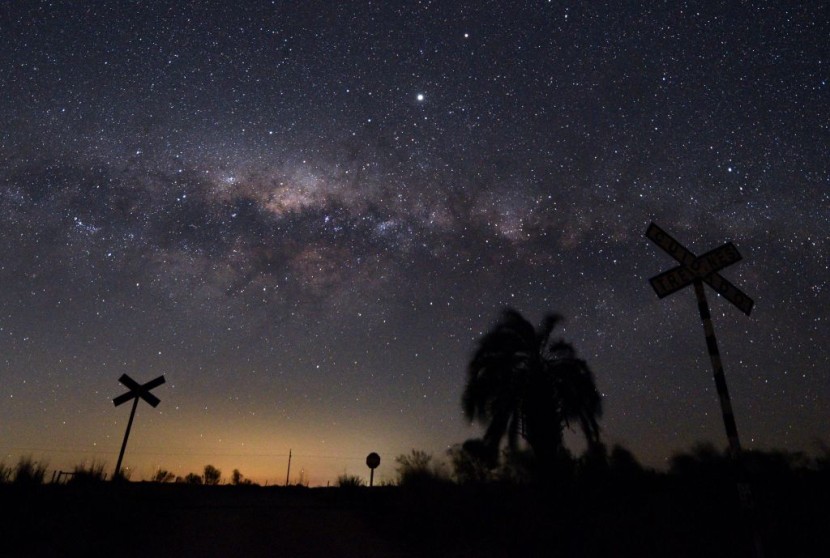
NASA's Hubble Space Telescope has discovered a new planet that was forming in an unusual way but already has nine times as much mass as Jupiter, which is the largest planet in our solar system.
While experts have a good understanding of what many planets are made of, the initial stage of planet formation, the process from a diffuse cloud of gas and dust to a solar system with a central star and rocky and/or gaseous worlds spread out in a chain, remains a mystery.
Massive Protoplanet
The dominant theory for gas planets such as Jupiter is that they originate as something as a "core accretion." This is a process that works similarly to how terrestrial planets, such as Earth, form and become what they are now.
The theory states that a planet undergoes a two-stage process where its core is formed via multiple collisions between planetesimals, which are essentially pieces of cosmic dust. But a long-debated theory about how Jupiter-like planets form, known as "disk instability," is another possible explanation, as per Salon.
Welcome to protoplanet AB Aurigae b!
— Hubble (@NASAHubble) April 4, 2022
Hubble captured evidence of this “Jupiter-like” protoplanet forming at a whopping distance of 8.6 billion miles away from its host star. That’s over twice as far as Pluto is from our Sun!
Learn more: https://t.co/fOkLBKxxmg pic.twitter.com/PqEAHLV6WN
Scientists hypothesize in this theory that gaseous planets form when part of a circumstellar disk becomes dense and cool enough to be vulnerable to gravitation collapse. It states that the process can result in the formation of a gaseous "protoplanet" that is considered to be a planet embryo.
Read Also: NASA's New Giant Moon Rocket Suffers Pressurization Issues, Forces Technicians To Delay Test Launch
However, up until now, experts are unable to directly observe such a process occurring in the natural universe. But on Monday, a study published in the Apr. 4 issue of Nature Astronomy shows that the Hubble has directly photographed evidence of a protoplanet growing through an "intense and violent process."
According to The Guardian, the researchers that made the discovery used the Subaru telescope, which is found near the summit of an inactive Hawaiian volcano orbiting the Hubble, to detect and study the planet known as AB Aurigae b. The cosmic body is a gas giant that is orbiting unusually far from its young host star.
Planet Formation
The new world that is forming is embedded in a protoplanetary disk of dust and gas with a distinct spiral structure. They swirl around a young star that is estimated to be roughly 2 million years old. This is about the same age as our solar system when planet formation was underway.
The lead researcher on the study, Thayne Currie of the Subaru Telescope and Eureka Scientific, said that nature is very clever. They noted that it can produce planets in a variety of different ways that astound experts.
AB Aurigae b is located some 8.6 billion miles away from its host star, which is roughly two times farther than Pluto is from our own Sun. Currie said that interpreting data regarding the planet was "extremely challenging."
Currie said that Hubble's longevity also played a particular role in assisting researchers in measuring the protoplanet's orbit. Originally, he was very skeptical of the planet actually being a planet. But archival data from Hubble and imaging from Subaru proved to be a turning point in changing his mind, NASA reported.
Related Article:
NASA Hubble Image Shows Stunning View of Farthest Star Seen; Is it Also the Oldest?
© 2025 HNGN, All rights reserved. Do not reproduce without permission.








